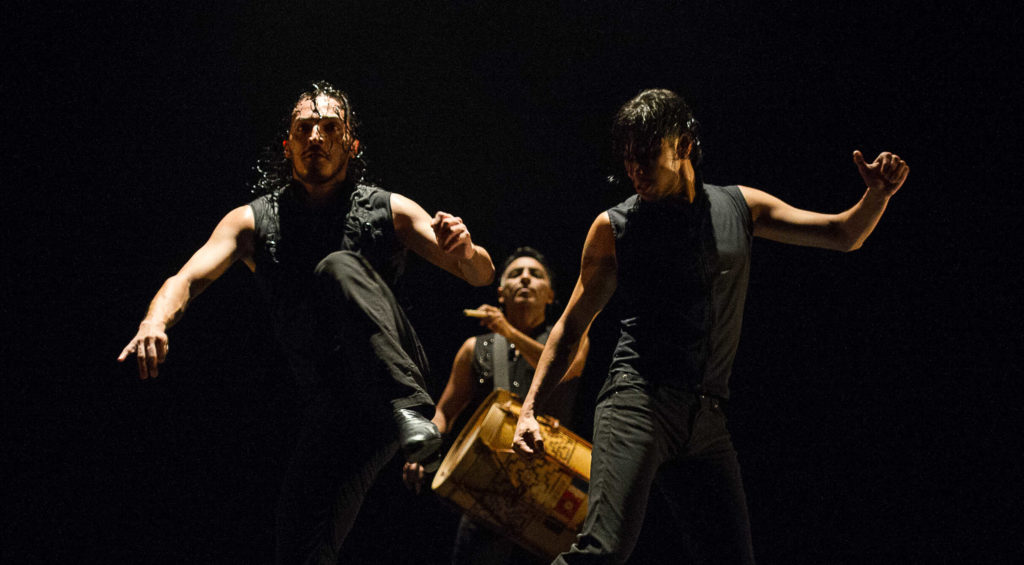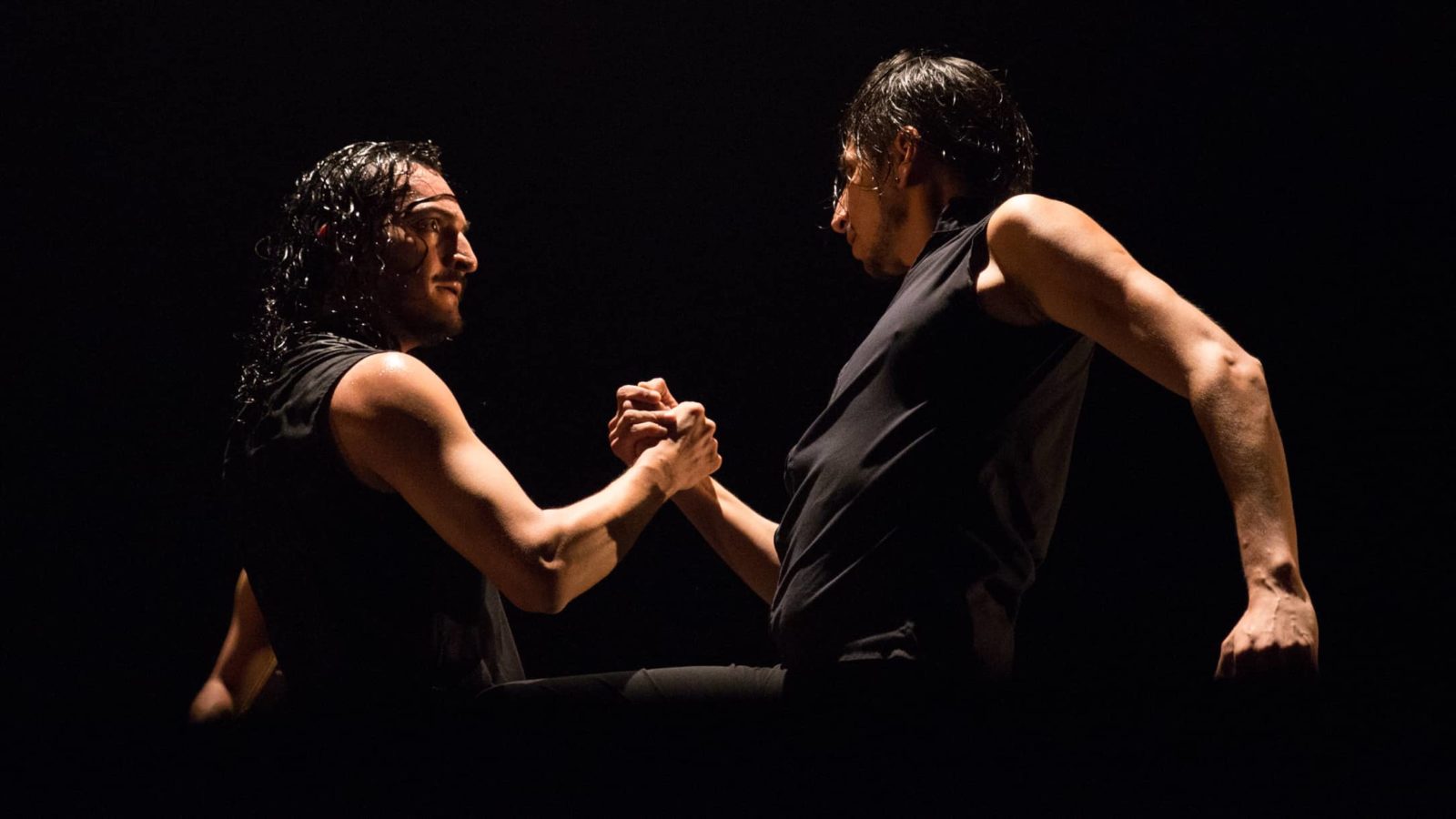The light comes up with a pulsing beat.
The company of men on stage each raise an arm. Every one of them carries a drum like a barrel, slung across the chest and played on the sides as well as on the head.
Argentine dancers in black vests, boots and trousers sleek as riding breeches are beating a tempo with the percussion of rhythm tap, their feet against the floor and their hands against the drums.
I am at Jacob’s Pillow on a cool evening after rain. I’m sitting at the end of a row of excited young girls in the Ted Shawn Theater, a spare building that has kept the warm-grained, post-and-beam shape of the barn it used to be 80 years ago.
And as the rhythm kicks in I feel myself smiling in spontaneous awe. I have been waiting since April to see Che Malambo.



Che Malambo performs at Jacob's Pillow Dance Festival in Becket.
The performers in the company have grown up dancing malambo, and the group formed when Parisian choreographer Gilles Brinas came to Argentina, to the Pampas, to learn the traditions of the gauchos — the cattlemen.
The company retreats fluidly, in the first of many easy changes, and one drummer holds the stage. He is flicking a quickening, shifting rhythm, and one dancer returns it. And then another dancer faces the first, locking eyes across the stage like a partner in flamenco and advancing lightly, his shoulders back, his stance radiating show me what you’ve got.
It’s a call-and-response challenge absorbed from African dance, Jacobs Pillow scholar-in-residence Jennifer Edwards told us before the show.
They are limber at the knee and elastic at the ankle, striking the floor with the heel, toe, ball and sides of the foot. And they sound percussion with hands against the body or feet against calves — over and over now, fast and repeated, an anapest beat like a galloping horse.

Fernando Gomez of Che Malambo performs at Jacob's Pillow Dance Festival in Becket.
Horses and the joined movement of riding and the exhilaration of speed live at the core of this tradition. Malambo grew out of the rhythms of men riding cattle and meeting after a drive to sit around a fire at night, Edwards said.
The gauchos emerged as cattle ranchers and skilled horsemen in the 19th century, and they evolved their own movement and music from South American Indian roots — from the Aonikenk, Kolla, Qom, Wichí, Diaguita, Mocoví, Huarpe Mapuche and Guarani peoples and many more — and from the many people who came or were brought to Argentina. Watching Che Malambo, she saw elements of African step dance Irish clogging, and the deep knee-bends of Russian Cossacks, and Spanish dances steeped in Muslim and Jewish traditions from the hills of Andalusia.
These dancers learned from their families, she said. They learned from a teacher, from someone who loved the art enough to pass it from generation to generation. And so do they. They all have other jobs. They are bus drivers, teachers, construction workers — and they are here on a national tour.
Now they take the stage again in loose pants like a farrier’s chaps or cossack trousers, and the change sparks an association. I’ve been learning about rhythm tap for this week’s performance of “And Still You Must Swing,” and in America women in tap have traditionally worn heels. They have fought to dance in the flat shoes men wear.
But here, the dancers’ getup has evolved from riding gear. Down to the ground. In a style that could have come straight out of Texas, they are wearing black cowboy boots — so every one of them is dancing in heels.
And their heels pound the stage in counterpoint to the rapping of boleadoras. They are each carrying one, sometimes two, lengths of rope tipped with stones. They were once used as weapons, but here they are percussion, spinning in a shimmering circle and knocking the stage. One man turns solo, and then another, whipping a cord in each hand like spinning poi as his feet keep time.
I am leaning forward, grinning without knowing it, until the beat quiets as though the galloping horses have slowed down in a breath, and the rhythm changes. Boleadoras wrap silently around wrists and dancers skim to the wings. With straight-faced comedy the company introduces a song about their country, and guitars and drum step on to support two voices, tenor and bass.
I know few of the words but mi corazón, my heart. Harmony runs over minor chords, and my throat tightens.
These men can draw the crowd together without words. They have the room in their hands.
The proof is coming. The audience not only comes to our feet at the final ovation — we stay standing all the way through the finale. Easing my way to the open door, I hear the couple beside me telling each other they have never seen or heard anything like it here before. I am laughing silently in the arms-wide rush of of the evening, wanting to hold onto it.
And I walk out into the night still shaking with it. Still high.
Photo at the top: Dancers perform in the company Che Malambo. Photo by Hayim Heron, courtesy of Jacob’s Pillow Dance Festival

